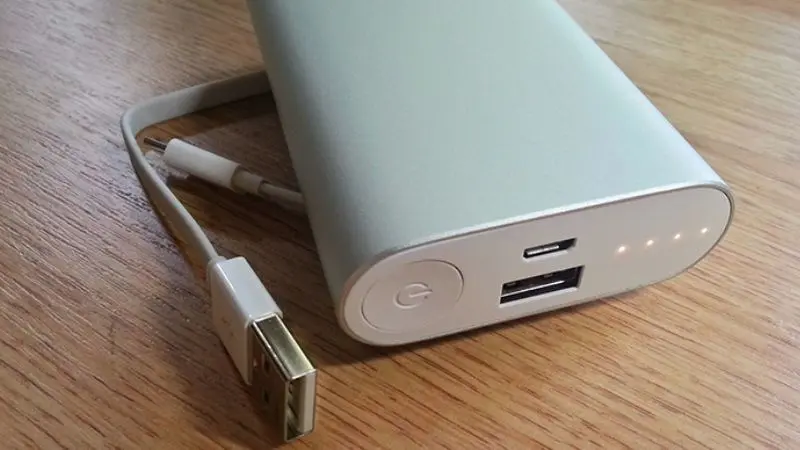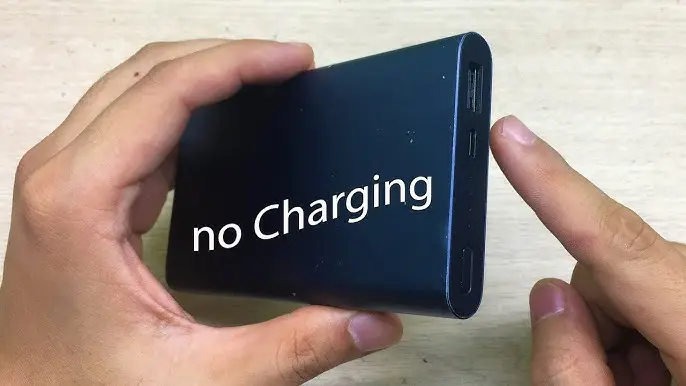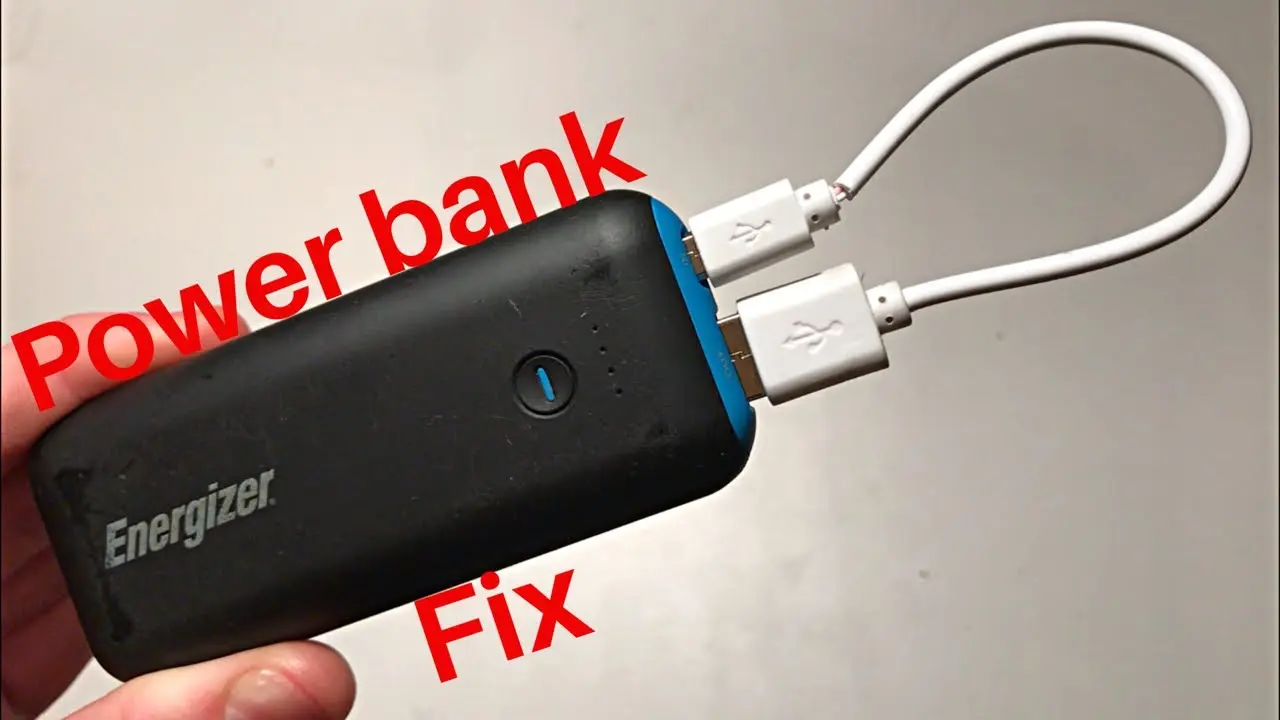How to Reset a Power Bank, Detailed Instructions for All Brands.

How to Reset a Power Bank?
To reset a power bank, follow these steps:
- Make sure the power bank is charged. Some power banks have a reset button that can only be accessed when the power bank is charged.
- Locate the reset button on the power bank. This button is usually a small hole or button that is labeled “reset” or “rst.”
- Use a small object, such as a paperclip, to press and hold the reset button for a few seconds.
- Release the reset button and wait for the power bank to reset. This may take a few seconds.
- Once the power bank has reset, it should be ready to use again.
Here are a few additional tips that may be helpful when resetting a power bank:
- Make sure the power bank is turned off before attempting to reset it. Some power banks have a switch or button that allows you to turn them off, while others may turn off automatically when they are not in use.
- If the power bank is not responding or appears to be stuck in a loop, you may need to perform a hard reset. To do this, you will need to fully discharge the power bank by using it until it is completely out of power. Then, you can recharge the power bank and try resetting it again.
- If the power bank is still not responding after trying these steps, it may be defective and in need of repair or replacement. In this case, you may need to contact the manufacturer or a repair service for further assistance.
- Some power banks may have a built-in protection mechanism that prevents them from being reset. If this is the case, you may not be able to reset the power bank at all.
- It’s important to follow the manufacturer’s instructions for resetting the power bank, as the steps may vary depending on the specific model you are using.
- If the power bank is not responding to the reset button, you may need to try pressing and holding the button for a longer period of time. Some power banks may require you to hold the button down for up to 15 seconds or more to initiate the reset process.
- If the power bank has a built-in display, you may see a message or indication that the reset process is underway. If you do not see any such indication, you may need to try resetting the power bank again to ensure that the process was successful.
- If the power bank is not responding to the reset button, you may need to try resetting it with the power bank turned on. Some models may require the power bank to be turned on in order for the reset button to work.
- If the power bank is still not responding after trying these steps, it may be necessary to seek assistance from the manufacturer or a repair service.
- It’s important to handle the power bank carefully during the reset process to avoid damaging it. Avoid applying too much force to the reset button or using sharp objects to press it.
Why do I need to reset my power bank?

There are a few reasons why you might need to reset your power bank:
- If the power bank is not charging or holding a charge
- If the power bank is not turning on
- If the power bank is not responding to input or is behaving erratically
Resetting the power bank may help to resolve these issues.
FAQ’s when resetting your Power Bank
The following questions and corresponding answers will help you along the way and when implementing the instructions given above.
How do I know if the reset process was successful?
A: If the power bank has a built-in display, you may see a message or indication that the reset process was successful. If you do not see any such indication, you can try using the power bank to see if it is working correctly.
How to troubleshoot if the power bank is still not working after resetting it?
If the power bank is still not working after resetting it, you may need to seek assistance from the manufacturer or a repair service. It is possible that the power bank is defective and needs to be repaired or replaced.
What is the average life of a power bank?
The average life of a power bank can vary depending on a number of factors, including the quality of the power bank, the frequency of use, and the way it is maintained. In general, a high-quality power bank should last for several years if it is used and maintained properly.
How to Extend the Life of my Power Bank so I don’t have to reset all the time?
- Charge the power bank regularly. It is best to keep the power bank charged when it is not in use, as this can help to prevent the battery from deteriorating over time.
- Avoid overcharging the power bank. Most power banks are designed to stop charging automatically when the battery is full, but it is still a good idea to unplug the power bank once it is fully charged to avoid overcharging the battery.
- Avoid exposing the power bank to extreme temperatures. Power banks can be damaged if they are exposed to extremely high or low temperatures, so it is best to store them in a cool, dry place.
- Avoid dropping or otherwise damaging the power bank. Accidental drops or other forms of physical damage can shorten the life of a power bank.
By following these tips, you can help to ensure that your power bank lasts for as long as possible. If you have any concerns about the life of your power bank, you may want to contact the manufacturer for further guidance.
How many times I can recharge my power bank?
The number of times a power bank can be recharged depends on the capacity of the battery and the rate at which it is discharged. In general, a power bank with a higher capacity will be able to hold a charge longer and can be recharged more times before it needs to be replaced.
As a rough estimate, a power bank with a capacity of 10,000mAh should be able to be recharged around 500 times before the battery begins to degrade significantly. However, this can vary depending on the specific power bank and how it is used.
To get the most out of your power bank, it is a good idea to follow the manufacturer’s recommendations for charging and discharging the battery. This may include avoiding overcharging the power bank or leaving it discharged for extended periods of time. By following these guidelines, you can help to ensure that your power bank lasts for as long as possible.
Can a power bank damage my phone?
In general, using a power bank to charge your phone should not cause any damage to your phone. Power banks are designed to provide a safe and stable source of power to charge your devices.
However, it is important to use a power bank that is compatible with your phone and to follow the manufacturer’s instructions for using the power bank. Some power banks may not be designed to work with certain types of devices or may have different charging requirements, so it is important to choose a power bank that is appropriate for your device.
Additionally, it is a good idea to avoid using damaged or defective power banks, as these may be more likely to cause problems. If you notice any unusual behavior when using a power bank to charge your phone, such as the phone not charging or the power bank overheating, you should stop using the power bank immediately and seek assistance from the manufacturer or a repair service.
By following these guidelines, you can help to ensure that your phone and power bank are used safely and effectively. If you have any concerns about using a power bank to charge your phone, you may want to consult the manufacturer or a technical support specialist for further guidance.
Should I Reset if the Power Bank Blinks but Doesn’t Charge?
Not necessarily. If a power bank is blinking but not charging your device, there could be a few different reasons for this issue. Here are a few steps you can try to troubleshoot the problem:
- Check the charging cable: Make sure that the charging cable you are using is properly connected to both the power bank and your device. You may also want to try using a different charging cable to see if this resolves the issue.
- Check the power bank’s battery level: If the power bank’s battery is low, it may not be able to provide enough power to charge your device. Try recharging the power bank and then attempting to charge your device again.
- Check the device’s charging port: If the charging port on your device is damaged or dirty, it may not be able to charge properly. Try cleaning the charging port with a dry cloth and then attempt to charge your device again.
- Check the power bank’s charging port: If the charging port on the power bank is damaged or dirty, it may not be able to charge your device properly. Try cleaning the charging port with a dry cloth and then attempt to charge your device again.
- Check the power bank’s charging output: Some power banks have multiple charging ports with different output levels. Make sure you are using the correct port for your device and that the output level is sufficient for your device.
Why is my power bank not charging?
There are a few different reasons why a power bank might not be charging:
- The power bank is out of power: If the power bank’s battery is completely depleted, it will not be able to charge your device. In this case, you will need to recharge the power bank before you can use it to charge your device.
- The charging cable is damaged: If the charging cable you are using is damaged or not functioning properly, it may not be able to transfer power from the power bank to your device. Try using a different charging cable to see if this resolves the issue.
- The charging port on the power bank is damaged: If the charging port on the power bank is damaged or not functioning properly, it may not be able to charge your device. Try cleaning the charging port with a dry cloth and then attempt to charge your device again. If the problem persists, you may need to seek assistance from the manufacturer or a repair service.
- The charging port on your device is damaged: If the charging port on your device is damaged or not functioning properly, it may not be able to charge. Try cleaning the charging port with a dry cloth and then attempt to charge your device again. If the problem persists, you may need to seek assistance from the manufacturer or a repair service.
- The power bank is defective: In some cases, a power bank may be defective and in need of repair or replacement.
How do I test my power bank?
Here are a few steps you can follow to test your power bank:
- Check the battery level: Most power banks have a built-in display that shows the current battery level. Make sure the power bank is charged and check the display to see how much power is left.
- Charge a device: Connect your device to the power bank using a charging cable and see if it charges. If the power bank is working properly, it should be able to charge your device.
- Check the charging speed: Some power banks have multiple charging ports with different output levels. Try using each of the charging ports to see if they are all functioning properly and charging your device at the expected speed.
- Check the charging port: If the charging port on the power bank is dirty or damaged, it may not be able to charge your device properly. Try cleaning the charging port with a dry cloth and then attempt to charge your device again.
- Check the charging cable: Make sure the charging cable you are using is functioning properly. You may want to try using a different charging cable to see if this resolves any issues you are experiencing.
What can damage a power bank?
There are a few different factors that can damage a power bank:
- Physical damage: Power banks can be damaged if they are dropped or subjected to other forms of physical trauma.
- Extreme temperatures: Power banks can be damaged by extreme temperatures, both high and low. It is important to store power banks in a cool, dry place to avoid exposing them to extreme temperatures.
- Overcharging: Power banks can be damaged if they are overcharged, so it is important to unplug the power bank once it is fully charged.
- Use with incompatible devices: Using a power bank with a device that is not compatible with the power bank’s output or charging capabilities can damage the power bank or the device.
- Using a damaged or defective charging cable: Using a damaged or defective charging cable can cause problems with charging and may damage the power bank.
By taking care of your power bank and avoiding these factors, you can help to ensure that it lasts for as long as possible. If you have any concerns about the condition of your power bank, you may want to contact the manufacturer or a repair service for further assistance.
What happens if you overcharge a power bank?
Overcharging a power bank can cause damage to the battery, which can shorten the life of the power bank. Most power banks are designed to stop charging automatically when the battery is full, but it is still a good idea to unplug the power bank once it is fully charged to avoid overcharging the battery.
If you do accidentally overcharge a power bank, it is not likely to cause any immediate problems. However, over time, the battery may begin to degrade and may not hold a charge as well as it did before. This can ultimately shorten the life of the power bank.
To avoid overcharging your power bank, it is a good idea to follow the manufacturer’s recommendations for charging and discharging the battery. This may include avoiding leaving the power bank plugged in for extended periods of time or charging it to 100% capacity if not needed. By following these guidelines, you can help to ensure that your power bank lasts for as long as possible.

